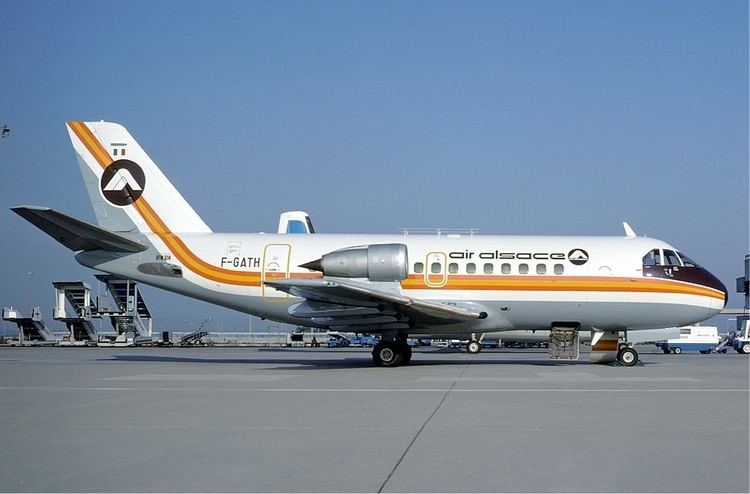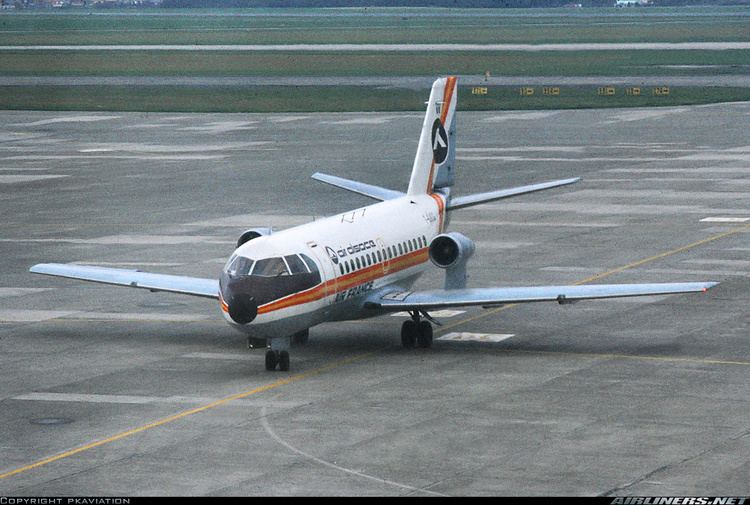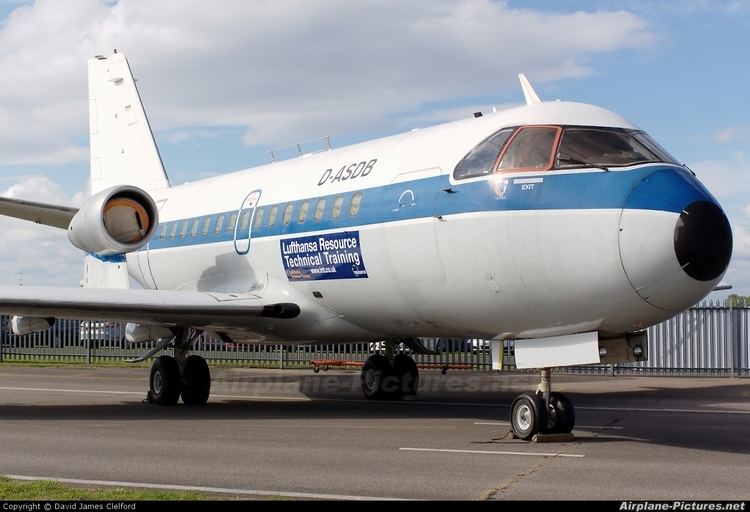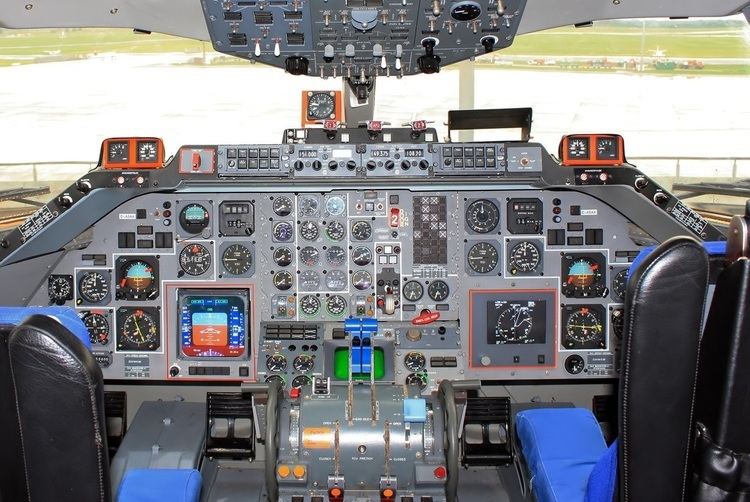Top speed 704 km/h Range 1,195 km Length 21 m | Cruise speed 722 km/h Wingspan 22 m Weight 12,180 kg | |
 | ||
Vfw fokker 614 dlr amazingly rare german jet with engines above wings airclips slideshows
The VFW-Fokker 614 (also VFW 614) was a twin-engined jetliner designed and built in West Germany. It was produced in small numbers by VFW-Fokker in the early- to mid-1970s. It was originally intended as a DC-3 replacement. Its most distinctive feature was that its engines were mounted in pods on pylons above the wing.
Contents
- Vfw fokker 614 dlr amazingly rare german jet with engines above wings airclips slideshows
- Design and development
- Operational history
- Operators
- Specifications VFW 614
- References

Design and development

The VFW 614 was originally proposed in 1961 by the Entwicklungsring Nord (ERNO) group, comprising Focke-Wulf, Hamburger Flugzeugbau (HFB) and Weser as the E.614, a 36-40 seat aircraft powered by two Lycoming PLF1B-2 turbofans. West German industry was subsequently reorganised and Vereinigte Flugtechnische Werke (VFW) was established at Bremen. Development of what was now the VFW 614 continued.

Although Lycoming abandoned the PLF1, development continued using the Rolls-Royce/SNECMA M45H turbofan, which was developed specially for the VFW 614. In 1968, the project was given the go-ahead, with 80 percent of the backing from the West German Government. Full-scale production was approved in 1970, by which time VFW had merged with Fokker (a somewhat unhappy arrangement which lasted for only ten years). Also risk sharing agreements had been concluded with SIAT in Germany, Fairey and SABCA in Belgium and Shorts in the UK. Final assembly of the aircraft would be done in Bremen.

The first of three prototypes flew on July 14, 1971. The first flight of the aircraft was also the first time the engine had been airborne as it had not flown on a flying test-bed. The aircraft had an unconventional configuration, with two quiet, smokeless, M45H turbofans mounted on pylons above the wings. This arrangement was used to avoid the structural weight penalties of rear mounted engines and the potential ingestion problems of engines mounted under the wings. This allowed a short and sturdy undercarriage, specially suited for operations from poorly prepared runways. The position of the engine over the wing, compared to under-wing, also shielded people on the ground from intake noise during flyover. This shielding is also present for aft-mounted engines.

With the above-wing installation a continuous trailing-edge flap was used with no unfavourable interaction with the engine flow. The continuous flap gave excellent low speed performance. At high speeds interference between the wing and pylon flow fields caused flow separation which limited the cruise Mn to 0.65. A recent aircraft, the HondaJet, with over-wing installation, uses a supercritical wing with no unfavourable interference effects.

Development of the aircraft was protracted and orders slow to materialise, despite a strong marketing campaign. The situation was not helped by Rolls-Royce's bankruptcy in 1971 which threatened the supply of engines. Also, the first prototype was lost on 1 February 1972 due to elevator flutter, worsening the order situation. By February 1975 only ten aircraft had been ordered. The first production VFW-614 flew in April 1975 and was delivered to Denmark's Cimber Air four months later.
Operational history
Only three airlines and the German Air Force operated new VFW 614s. The aircraft was initially prone to engine problems, and it was too expensive for the small regional airlines for whose needs it was designed. Three aircraft were flown but never delivered, and four airframes were broken up before completion. The programme was officially cancelled in 1977, and the last unsold aircraft flew in July 1978. Most aircraft had been disposed of by 1981, with the manufacturer buying back the aircraft and simultaneously ending support of it. Thereafter, only the German Air Force aircraft remained in service, the last being retired in 1999. The last airworthy VFW 614 was in use with DLR for the Advanced Technologies Testing Aircraft System (ATTAS) project. After being based with DLR in Braunschweig, Germany for many years, this aircraft (registered D-ADAM) was retired in December 2012, to the Deutsches Museum Flugwerft in Oberschleißheim, Germany.
Operators
Specifications (VFW 614)
Data from The Observer's Book of Aircraft, 1976.
General characteristics
Performance
